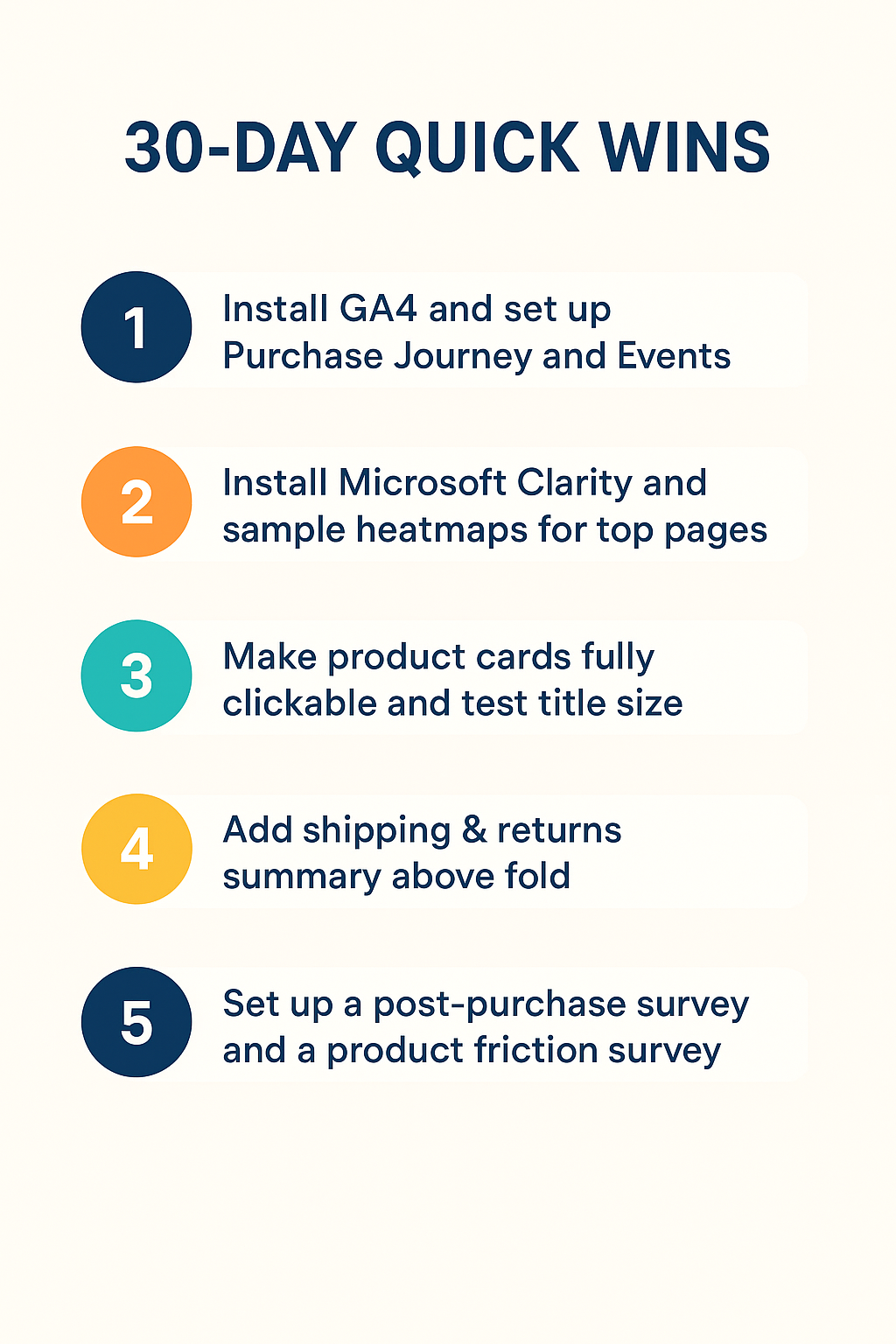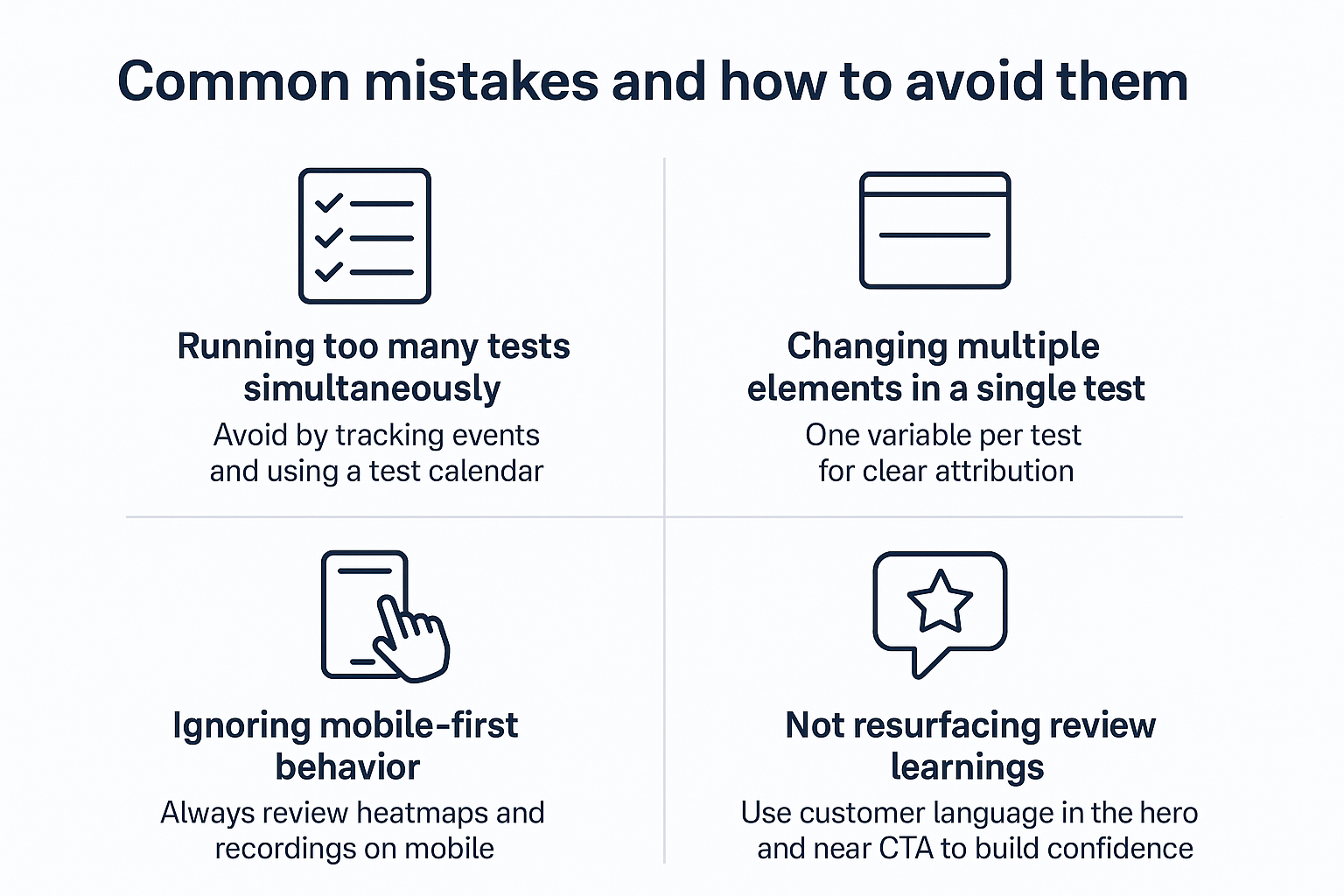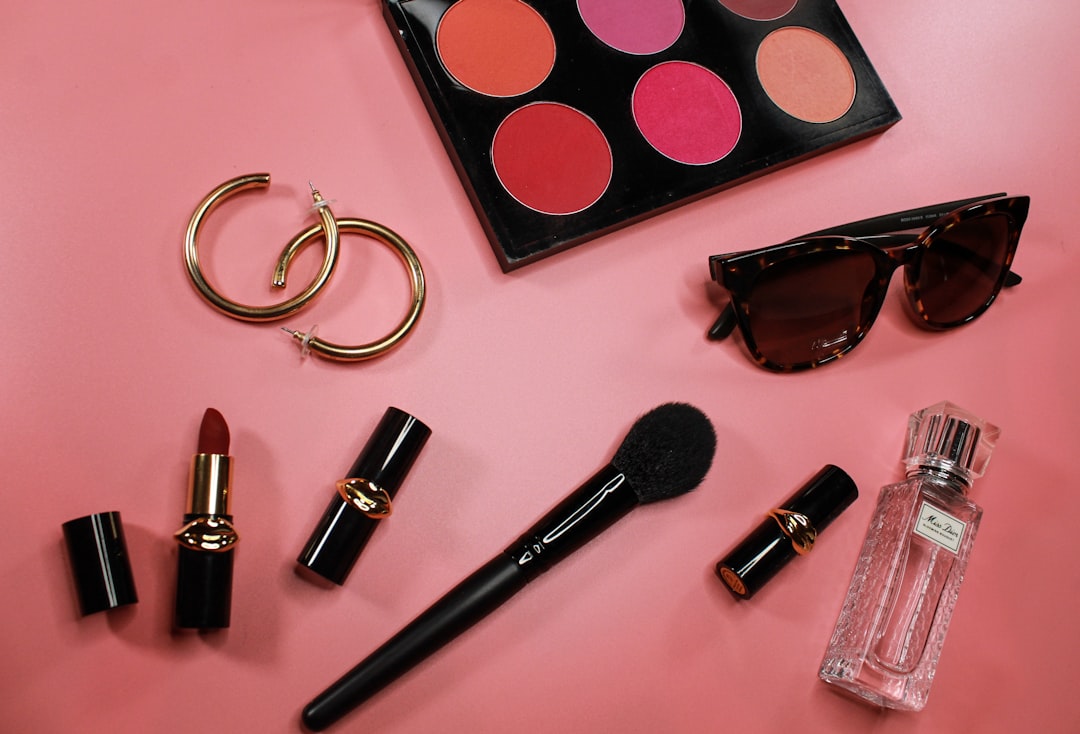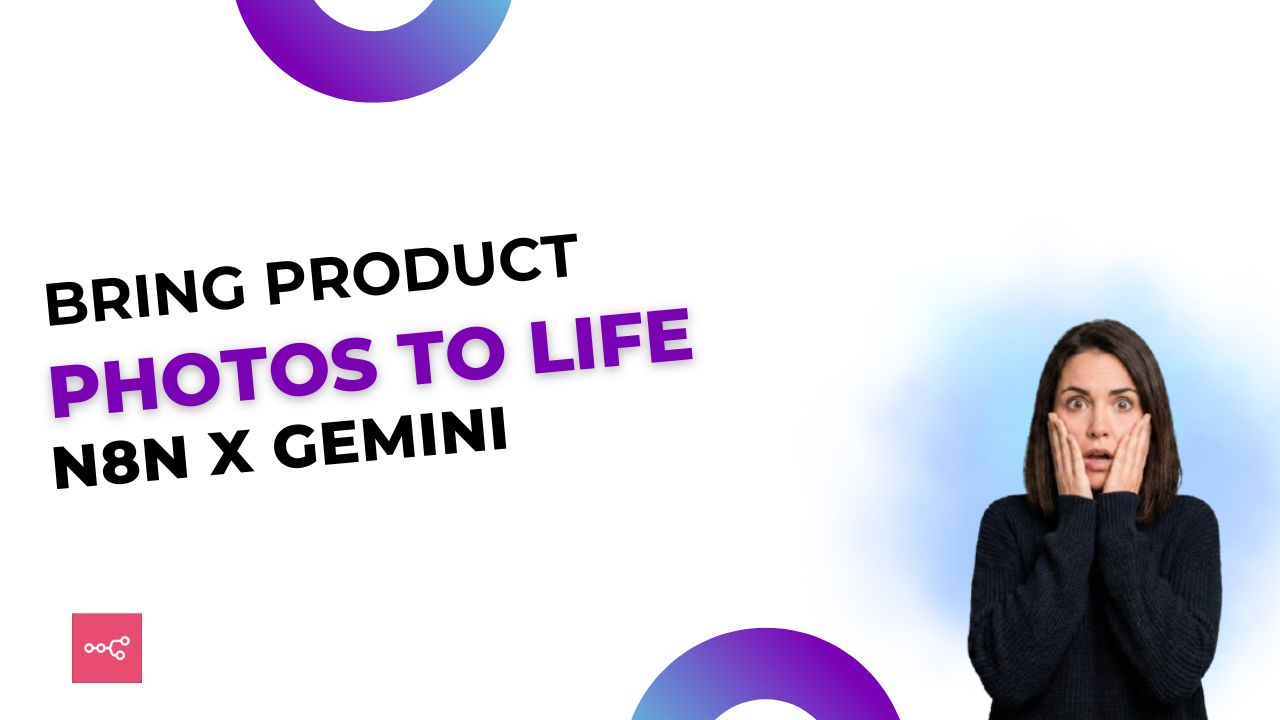Summary
READ ITIf you're running a Shopify store in jewellery, cosmetics, or fashion and you want to squeeze more revenue from the same traffic, this article lays out the CRO tips you need — step-by-step, data-driven, and tailored to the realities of visual product verticals. This guide distills the exact audit, research, and testing framework used by conversion experts to find the "conversion leaks" in a site and fix them fast. Read on for practical examples, prioritized roadmaps, concrete A/B test ideas, and a checklist you can implement today.
Why these CRO tips matter for Shopify jewelry, cosmetics, and fashion sites
Shopify makes launching a store fast, but it also means many merchants share the same baseline checkout and templates. That makes on-site conversion the battleground. Every click you can nudge toward a product page or add-to-cart button multiplies your return on ad spend. These CRO tips are specifically chosen for high-imagery, high-variant categories where product discoverability, visual trust, and clear information are everything.
Across thousands of audits, the single biggest leak we find 90–95% of the time is the product discovery → view product stage. That means users land on the store but don't find the right product quickly enough to view product pages. Fix that and you unlock most of the upside in revenue. These CRO tips will help you identify those leaks and then systematically test fixes on Shopify stores selling jewellery, cosmetics, and fashion.
.jpg)
Overview: The five core areas every Shopify merchant must nail
- Data-first diagnosis (GA4 purchase journey + path exploration)
- Heatmaps, click maps, and scroll maps to understand on-page behaviour
- Qualitative feedback: surveys, user tests, and session recordings
- Review mining and messaging reinjection
- Prioritization, hypothesis-driven tests, and incremental wins
Throughout this article you'll see concrete examples for jewellery, cosmetics, and fashion. Each section includes tactical CRO tips you can apply on Shopify today, plus specific A/B test suggestions.
1. Start with the data: GA4 purchase journey and path exploration
Before you redesign, run ads, or change copy, analyze your data. The single worst thing a merchant can do is guess. Use Google Analytics 4 (GA4) to find where people are dropping off in the funnel. This is the foundation of all sensible CRO tips.
Use the Purchase Journey report in GA4
Go to Reports → Monetization → Purchase Journey. This dashboard answers critical questions:
- What percentage of sessions reach product pages (view product rate)?
- What is the add-to-cart rate?
- Where in the funnel are people falling off?
Typical benchmarks we use internally for Shopify stores:
- Add-to-cart rate: 12–20% (if you’re below 12%, you have product or persuasion issues)
- Purchase conversion (checkout completion) — full checkout experience is often standardized on Shopify, but unexpected costs (shipping, taxes) reduce conversion
- View product rate: this is often the biggest problem — product discoverability and navigation
Example: a jewellery store showed an add-to-cart rate of 9.9% (below benchmark) and a view product rate severely under-indexed. That immediately signals product discoverability issues, not just product-page persuasion problems. These are the kinds of insights that turn into the first batch of CRO tips to test.
Path Exploration: follow the real user journeys
Use Explore → Path exploration to map where users go from the homepage, collection pages, or product pages. The power here is discovering loops people fall into. For instance, we often see behaviour like: Homepage → Collection page → Homepage → Collection page. That pattern shows a navigation problem. Users are bouncing between two points because they can't refine options or find what they wanted.
For a fashion brand, you might see: Homepage → “Dresses” collection → Homepage → “Dresses” collection. That indicates the collection page isn’t giving filters, clear sorting, or strong hero products. It suggests immediate tests: add filters, highlight bestsellers, or change grid ordering.
Actionable CRO tips from path exploration:
- Filter by device. If desktop outperforms mobile in product views or revenue per visitor, improve mobile search, thumbnails, and tap targets.
- Follow the endpoint: set add-to-cart as endpoint and expand backwards. What pages lead to add-to-cart? Which traffic sources or landing pages produce higher revenue per visitor?
- Look for circular flows. If 10–15% of sessions loop between homepage and a collection, prioritize navigation fixes.
2. Visual behavior: heatmaps, click maps, and scroll maps
Numbers tell you where the problem likely is. Heatmaps and scroll maps tell you why. We recommend Microsoft Clarity (free) plus a session-recording tool. These visual tools are a core set of CRO tips for diagnosing layout and content problems.
Click maps and area maps — what users actually click
On product grids and product pages, map clicks to real elements. For example, on a jewellery product grid we found the product title (small font) received more clicks than the product image and add-to-cart CTA combined. That was a huge red flag. The title was small, not prominent, and the clicks on it were not taking users through to purchase.
Takeaway CRO tips:
- Make clickable elements obvious and correctly sized for tap targets on mobile.
- If titles are getting more clicks than images, test enlarging the title and making it a clear link to the product page, or redesign the card so the whole card is a clickable area.
- Replace tiny thumbnail dots (that hide multiple images) with visible alternative images or a hover preview. For fashion and cosmetics, lifestyle variants and color swatches must be visible on the thumbnail to increase click-throughs.
Scroll maps — where attention drops
Scroll maps show how far users scroll on product pages and landing pages. On a cosmetics site, a long ingredient table pushed the add-to-cart button below the fold; only 36% of users reached it. The scroll map showed a steep drop-off right where the product imagery dominated the viewport. Solutions include compressing the description, moving critical CTAs higher, or using accordions for long content like ingredient lists.
Actionable CRO tips from scroll behavior:
- Keep the first product fold clean: main image, headline, price, short value proposition, and an obvious CTA.
- Use collapsible sections for long details (size guides, ingredients, FAQs). For jewellery, put sizing and material callouts near the price and CTA.
- For fashion, use a “shop the look” strip above the fold to show outfits using the product.
3. Qualitative research: surveys, post-purchase feedback, and user tests
Quantitative data reveals the WHAT. Qualitative research reveals the WHY. The best CRO tips mix both. Low-traffic stores especially need qualitative inputs (surveys, user tests) to get statistically meaningful insights quickly.
Post-purchase survey: what motivated the buyer?
Ask buyers directly: "What motivated you to buy from us today?" We prefer open-ended answers for stores that don't have huge volumes, because the verbatim text reveals unexpected motivators: a specific influencer, a gift, a perceived ingredient benefit, or a discount code applied at checkout.
How to use responses:
- Extract frequent motivators and inject them into product page hero copy (e.g., “Loved for long-wear color” for cosmetics; “Quick shipping for gifts” for jewellery)
- If buyers mention social proof or influencer names, add that content to the homepage or product page
- Use the responses to build microcopy and confidence signals in the checkout flow
Product friction surveys
On product pages, ask: "Is anything holding you back from buying this product today?" If they say yes, ask "What is it?" This pulls in objections in the users' own words (e.g., unsure about ring size; shade mismatch; bundle discounts missing). Use that language to resolve objections directly on page.
Tools: Okendo (for Shopify), Typeform, or custom Shopify widgets. Okendo also integrates product reviews and UGC, which is gold for these categories.
User testing and session recordings
Run moderated or unmoderated user tests with 5–10 users to get a feel for the navigation, product discovery, and purchase confidence. Session recordings reveal micro-frustrations — e.g., users trying to filter by “gold” but filter named “metal type”; users unable to find a size guide until checkout.
Common issues uncovered in our audits for these niches:
- Jewellery: ring sizing buried deep; ambiguous alloy names (e.g., "sterling" vs "925"); invisible warranty/return policy.
- Cosmetics: shade swatches missing on thumbnail grids; lack of shade comparison tool; ingredient benefits not summarized.
- Fashion: inconsistent size charts, models with different body types unclear, filters that don't combine (size + color + price).
4. Reviews and messaging: mining customer feedback and reinjecting it into pages
Reviews are a treasure trove. We take all reviews across channels (site reviews, Google, Trustpilot, Amazon) and categorize the most frequent themes. This is not just about testimonials; it’s about extracting the customer language that addresses value, anxieties, and expectations.
How to mine reviews (quick process)
- Export reviews from each channel into a spreadsheet.
- Tag each review with themes: quality, fit, shade, shipping, packaging, support, returns.
- Mark whether each theme is a motivation, value point, or anxiety.
- Pivot the data to find the most frequent themes across positive and negative reviews.
Example result for a cosmetic launch:
- Most frequent positive theme: "Long-lasting without fading" (inject into hero copy and ads)
- Most frequent negative theme: "Shade looks different in sunlight" (add a shade-comparison tool and more outdoor swatches)
Actionable CRO tips based on review insights:
- Create an FAQ snippet addressing the top three anxieties on every product page.
- Add trust badges (e.g., cruelty-free, dermatologically tested) and warranty statements near the CTA.
- Surface user-generated photos on the gallery to increase authenticity—especially powerful for cosmetics and fashion.
5. Prioritization and execution: turn insights into tests
Once you have diagnostics and qualitative inputs, you need to prioritize. We use a simple scoring framework: Potential impact × Evidence strength × Ease of implementation. This ranks hypotheses into a test roadmap.
.jpg)
Example prioritization for a jewellery Shopify store
- High impact, easy: Make the entire product card clickable and enlarge the title; reason: title receives more clicks than image (evidence: click map); expected impact: higher view product rate.
- High impact, mid effort: Add a ring size finder and simple sizing visual (evidence: surveys mention sizing uncertainty); expected impact: higher add-to-cart conversion.
- Mid impact, easy: Remove wishlist button clutter on mobile (evidence: heatmap; wishlist button unused); expected impact: clearer CTA visibility.
Actionable CRO tips for testing on Shopify
- Always A/B test one variable at a time (headline, CTA color, product image size).
- Run tests long enough to reach statistical significance, but use sequential testing — implement early wins while a long-term test runs.
- Instrument events properly via GA4 and your A/B testing tool so you track view product, add-to-cart, and purchase events.
11 quick CRO tips you can implement this week (tailored examples)
These quick wins have produced immediate lifts across jewellery, cosmetics, and fashion Shopify stores. Each tip includes a hypothesis and a simple test idea.
- Make product cards fully clickable — Hypothesis: Users expect card clicks to take them to the product. Test: Full-card clickable vs current state. (Jewellery: ring thumbnails; Cosmetics: swatch-enabled thumbnails.)
- Enlarge the product title and make it a primary link — Hypothesis: Titles getting clicks means they are readable; make titles more prominent. Test: larger title vs control.
- Swap dot-thumbnails for image thumbnails — Hypothesis: Visual thumbnails increase image engagement. Test: image thumbnails vs dot swatches. (Fashion: multiple model shots; Cosmetics: shade previews.)
- Move critical info above the fold — Hypothesis: Customers don’t scroll far enough for long descriptions. Test: short teaser + accordion vs full long copy. (Cosmetics: short benefit bullets; Jewellery: material + warranty.)
- Add a shade or fit comparison widget — Hypothesis: Shade and size uncertainty cost conversions. Test: add comparison tool vs no tool. (Cosmetics: shade swatch visual; Fashion: size-simulated model images.)
- Introduce micro-commitments — Hypothesis: Smaller CTAs increase engagement. Test: "View product" or "See shades" vs "Add to cart." (Jewellery: "See on model"; Cosmetics: "Try shade on.")
- Surface top review snippets in the hero — Hypothesis: Social proof near CTA reduces anxiety. Test: hero review vs no hero review.
- Offer a small sample or mini for cosmetics — Hypothesis: Lowered friction for trial increases full-size purchases. Test: add sample option vs control.
- Simplify collection filters — Hypothesis: Too many filters cause confusion. Test: condensed filters vs full filter set. (Fashion: combine color + pattern filters.)
- Show multiple lifestyle images prominently — Hypothesis: Contextual images increase buyer confidence. Test: two lifestyle images first vs product-only first.
- Display shipping and returns clearly before checkout — Hypothesis: Unexpected costs reduce checkout conversion. Test: shipping info in hero vs shipping info in checkout only.
Three vertical-specific CRO playbooks (jewellery, cosmetics, fashion)
Below are playbooks you can copy. Each playbook includes a baseline diagnosis checklist, a prioritized test list, and real wording examples to use in copy.
Jewellery CRO playbook (Shopify)
Baseline diagnosis checklist:
- Setup GA4 and check view product rate vs benchmark.
- Check click maps for product card behavior.
- Survey post-purchase about sizing and occasion.
- Collect reviews and tag by durability, fit, and gift appeal.
Priority test list:
- Full-card clickability and enlarged title (test immediately).
- Add a ring sizer tool and "How to measure your ring" microcopy (mid effort).
- Test hero copy that answers the top negative review (e.g., "Hypoallergenic materials: no green fingers") near CTA.
- Test product gallery order: show model-worn images first, then detail shots.
- Test "Free engraving" vs "Free gift wrap" as promo for gift-driven traffic (A/B by traffic source).
Copy examples:
- Hero tagline: “Timeless rings, guaranteed sizing — free exchange within 30 days.”
- Microcopy by size selector: “Not sure about size? Use our printable sizer or chat with us — free guide included.”
Cosmetics CRO playbook (Shopify)
Baseline diagnosis checklist:
- Check product thumbnail swatches on collection pages.
- Inspect scroll maps for ingredient blocks and CTA visibility.
- Run shade-mismatch survey for returns feedback.
- Collect review photos and tag by shade, longevity, texture.
Priority test list:
- Replace dot swatches with real-image swatches on collection pages.
- Introduce a virtual try-on or "see on different skin tones" strip above fold.
- Test condensed benefits bullets vs long paragraphs.
- Offer small sample add-on in cart and measure full-size uplift.
Copy examples:
- Hero bullets: "Cruelty-free · Lasts 12+ hours · Safe for sensitive skin".
- Shade microcopy: "Shade appears lighter on mobile — see swatches on three skin tones."
Fashion CRO playbook (Shopify)
Baseline diagnosis checklist:
- Validate filters (size, color, fit) and test combinations.
- Check model images and ensure multiple body types for top SKUs.
- Survey about returns and sizing pain points.
Priority test list:
- Add size-simulated images (how the item looks on different body types).
- Test “Shop the look” above the fold for product pages.
- Test simplified filter layout and default sort (e.g., “recommended” vs “newest”).
- Test promotional messaging targeted to high-return-risk SKUs (e.g., “fits true to size — see fit guide”).
Copy examples:
- Hero snippet: “Fits as expected — free returns within 30 days.”
- Size guide CTAs: “Compare your measurements to our model for the best fit.”
How to design good CRO tests (hypotheses, metrics, duration)
Every test needs a hypothesis, primary metric, secondary metrics, and an estimated sample-size/timeframe. For Shopify stores, track these core events: view_product, add_to_cart, begin_checkout, purchase, and revenue per visitor (RPV).
Test structure example:
- Hypothesis: "If we show model-worn images first on the product gallery, then the add-to-cart rate will increase by 10% because shoppers will better understand fit."
- Primary metric: add_to_cart rate.
- Secondary metrics: view_product rate, revenue per visitor, and checkout completion.
- Duration: run until minimum detectable effect is met or for a 2–4 week window, whichever achieves significance.
Quick math tip: If your site gets 5,000 sessions/month and your add-to-cart baseline is 10%, a 10% relative lift is hard to prove quickly. Prioritize high-traffic pages or run longer tests. Use qualitative tests for low-traffic stores to validate hypotheses before heavy A/B testing.
Tools that make these CRO tips actionable
A recommended stack for Shopify stores focused on jewellery, cosmetics, and fashion:
- Analytics: Google Analytics 4 (purchase journey, path exploration)
- Heatmaps & recordings: Microsoft Clarity (free), Hotjar or FullStory (paid)
- Reviews & UGC: Okendo for Shopify (surveys + reviews)
- Email & onsite messages: Klaviyo
- A/B testing: Optimizely or VWO (or Shopify A/B testing apps for simple visual tests)
- Session recordings & funnels: FullStory or Hotjar
Why these tools? Because they let you combine the quantitative signals (GA4), the visual evidence (heatmaps), and the user voice (surveys and reviews). That combination is the core of effective CRO tips and experimentation.
Prioritization checklist: what to fix first
Use this checklist to decide what to fix first. Score each item 1–3 on Impact, Evidence, and Effort. Multiply the three scores and prioritize highest scores first.
- Product discovery issues on collection pages (Impact high if view product rate low)
- Mobile tap targets and card clickability
- CTA visibility and above-the-fold persuasion
- Sizing/shade tools and returns information near CTA
- Shipping and cost transparency before checkout
Example prioritization table (simple form):
- Full-card clickability — Impact: 3, Evidence: 3, Effort: 1 → Score: 9
- Ring size finder — Impact: 3, Evidence: 2, Effort: 2 → Score: 12 (still high)
- Sample pack for cosmetics — Impact: 2, Evidence: 2, Effort: 1 → Score: 4
Real A/B test examples and expected outcomes
Here are three real tests we've seen run and their outcomes (anonymized):
- Image-first gallery for rings — Variation: show a model-worn image first on ring product pages. Result: +18% add-to-cart rate, +14% revenue per visitor.
- Shade swatch thumbnails for lipstick — Variation: replace dots with real swatches and add "see on 3 tones" strip. Result: +22% product views, +12% add-to-cart rate.
- Size-simulated images for dresses — Variation: show dress on three body types in the hero carousel. Result: +10% checkout completion, -8% returns.
These results are not universal, but they show the scale of impact targeted, evidence-backed tests can achieve. Use the same process: diagnose → hypothesize → test → implement.
Checklist: CRO tips quick implementation (30–90 day roadmap)
30-day quick wins
- Install GA4 and set up Purchase Journey and Events.
- Install Microsoft Clarity and sample heatmaps for top pages.
- Make product cards fully clickable and test title size.
- Add shipping & returns summary above fold.
- Set up a post-purchase survey and a product friction survey.

60-day mid-term
- Run user tests and review recordings for top SKUs.
- Mine reviews and inject top themes into hero copy and CTAs.
- Introduce shade/sizing tools and run A/B tests.
- Test image-first galleries and product card thumbnails.
90-day longer-term
- Run multi-week A/B tests for high-traffic flows and implement winners.
- Integrate review UGC on product pages and test positioning.
- Implement product discovery improvements: smart search, Doofinder or Shopify search apps, and test conversion lift.
Common mistakes and how to avoid them
- Running too many tests simultaneously without instrumentation — avoid by tracking events and using a test calendar.
- Changing multiple elements in a single test — one variable per test for clear attribution.
- Ignoring mobile-first behavior — always review heatmaps and recordings on mobile because these verticals get heavy mobile shopping.
- Not resurfacing review learnings — use customer language in the hero and near CTA to build confidence.

Frequently Asked Questions (FAQ)
Q: What is the single most effective CRO tip for a jewellery Shopify store?
A: Improve product discoverability. If view product rates are low, make product cards fully clickable, increase the prominence of titles and images, and add simple filters for metal, stone, and occasion. A focused test usually yields the largest quick uplift.
Q: How do I prioritize CRO tests when my store has low traffic?
A: Use qualitative methods first — surveys, user tests, and session recordings. Run small changes with strong qualitative backing (e.g., make card clickable) and use longer duration tests for quantitative validation. Prioritize high-leverage fixes (navigation, CTA visibility, shipping transparency).
Q: Are there Shopify apps recommended in your CRO tips?
A: Yes — Okendo for reviews and surveys, Klaviyo for post-purchase flows, Microsoft Clarity for heatmaps/recordings (free), Vidjet to improve product visualization through short videos, and Doofinder for improved site search. For A/B testing, use Shopify App Store options or a dedicated tool like VWO/Optimizely depending on budget.
Q: How many CRO tips should I implement at once?
A: Implement one major test at a time for clear learning. You can implement low-risk UX cleanups (e.g., CTA color, clickability) concurrently, but track changes carefully and keep a test log to avoid confounding results.
Q: How long should an A/B test run on a typical Shopify store?
A: Until you reach statistical significance for your primary metric or until a reasonable timeframe (2–6 weeks depending on traffic and expected effect size). For low-traffic stores, prioritize qualitative validation first and run longer tests for critical changes.
Final checklist before you start: quick CRO tips summary
- Install GA4 and set up purchase funnel events
- Run path explorations to find navigation loops
- Map heatmaps and scroll maps for your top collection and product pages
- Run post-purchase and product friction surveys
- Mine reviews and inject customer language into page copy
- Prioritize tests using impact × evidence × effort
- Test changes on mobile-first
- Track view_product, add_to_cart, and revenue per visitor (RPV)
- Iterate: test, measure, implement winners
Closing thoughts and next steps
These CRO tips are not theory — they are the sequence we use when auditing and improving Shopify stores in jewellery, cosmetics, and fashion. Start with data (GA4), visualize behavior (heatmaps & recordings), hear the user (surveys & reviews), and then prioritize tests that are high-impact and easy to implement. Small changes like making a product card clickable, making the title more prominent, or surfacing reviews near the CTA can multiply revenue without increasing traffic.
If you want to go deeper, watch the original video by Arsh Sanwarwala | ThrillX for a walkthrough of these exact techniques and free resources to get started. Credit to Arsh for the audit framework and the example diagnostics that inspired many of these CRO tips. Implementing these recommendations will help you make every marketing dollar maximize return on your Shopify jewellery, cosmetics, and fashion store.
Ready to get started? Pick one page, run a heatmap, and implement one of the 11 quick CRO tips above. Measure for 2–4 weeks, and iterate. The compounded impact will surprise you.





